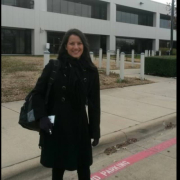Application security is one of the fastest trending topics from IT Central Station community members. Why do companies need to purchase app security software?
Is it due to common web application vulnerability types (e.g. Cross-Site Scripting, SQL injection, CSRF injection) that these solutions fix? Are there other reasons to purchase app security software?
Thanks for helping your peers cut through vendor hype and make the best decision.









Acquiring the tools is not the goal, it is to operate an Application Security program. Remember that you need People-Technology-and-Processes, not simply some cool technology tool, even if that modern tech is now much faster and clearer than ever before. An AppSec program is meant to ensure that secure software is produced and used to minimize risk to the organization. This program can include SAST testing, DAST testing, RASP runtime protection layers, or even open-source and third-party software awareness. I have also seen some companies include OS and app patching and patch levels monitoring within their AppSec program, to fully encompass all their company's software exposure. No one bats an eyelash at requiring a firewall, identify management, and similar "perimeter defenses", but a surprising number of companies produce and run their software with only functional testing being performed before release. The application's activity (and its context) is often invisible to SIEM and other network monitoring devices. The attacker is permitted into the "network" via these applications 24 hours per day (so "business is not disrupted"), and yet the IT team has no idea what those users are doing within the application ("context"). An AppSec program can help minimize the damage that could be done inside of the application, by producing robust software. By developing proper processes, an AppSec program can be added without disturbing the speed-to-development and has been shown to improve overall code security and quality while lowering overall costs.
For more fun reading, Gartner recently published the poor state of code development and security in 2018/2019: searchsecurity.techtarget.com
Application security software is needed to unearth vulnerabilities in the target application, show the risks associated with it. Application security helps manage risks efficiently, eliminate brand erosion, ensure compliance to standards and industry best practices. Enterprises cannot handle this with manual validation alone, which can be both time consuming and does not provide a great deal of guarantee. Providing assurance to security needs to happen with tools that are up-to-date to unearth all known vulnerabilities. Enterprises derive this confidence using security testing tools in the market.
Most of the application security tools are based on unearthing issues pertaining to top OWASP vulnerabilities and associated risks. Risk valuation on the vulnerabilities that allow you to address the highest risks first, maximize resources and minimize risks efficiently. Application Security Test tools help organizations to speed up this exercise. Unearthing and eliminating security breaches helps eliminate brand erosion, all of which require application security test tools. There are plenty of application security testing tools in the market like ZAP Proxy, BurpSuite, Acunetix to name a few.
One needs application security tools and hopefully, those that can find the new and latest types of issues like www.deepcode.ai because of the adversaries trying to break your applications are quickly getting their hands on the latest research and tools. Specifically, today, when the best tools are available for free for open-source and small teams.
Tapping into the knowledge of the global development community and hundreds of millions of fixes is one of the main ways that applications can come closer to adequate security measures against a determined adversary.
The answer is “Do you want to be EFX and be in the news? Does your CEO or CIO want to be removed from his job? Do you want to be the one responsible for a security breach?”
It is very important to understand that security is like a defense of a fort. You have to put in various layers of security to protect your King or Queen which in most cases is your valued code or data.
You can improve the infrastructure by placing various layers like firewalls, WAF, SEIM, etc but without software protection, you have left a chink in your security armor.
Application Security software can be imbibed into devSecops, which can help detect the vulnerabilities in the early development cycle, which in turn reduces the cost of fixing the vulnerability later. Tools like HCL Appscan, AppScan source, etc can be used to automate the process which reduces the manual effort of navigating to each and every page or source code. They also have good fix recommendations and pinpoints the line of code and how a test was conducted. Finding vulnerabilities in your application before it is out in the market keeps your brand value up and customers are happy with a secure software in hand.
Different AppSec software tools do different things. Some do penetration testing, some do binary scanning, some scan for known vulnerabilities in open-source components, some do static analysis for common software weaknesses. It depends on what your needs are.
Security Software like Appknox or Qualys not only help in detecting these common vulnerability types that you have mentioned but also automate a lot of security testing thus ensuring the faster release of apps in an agile favored development cycle. It is a must-have contradict to so-called security as a show stopper for agile development of applications. Automation from security software can be utilized and scaled up without costing money to hire more resources and time lost (can be linked to money opportunities you might lose) due to delay in app release.
Application Security is one of the important aspects which needs to be taken care of in the development phase. During development, the developer will leave some weak points which makes software to open for several attacks. Hackers will always find these week points for attacking and stealing your data.
I believe it's very difficult to find these weak sections in the code and fix it manually. Most of the times it will kill our effort as well as most of our time which may lead to delay in the delivery of our projects. So the best way to resolve this is by using automation tools.
Nowadays there are a lot of tools for finding these vulnerabilities at the development phase. Tools like Klocwork, Kiuwan and so on are at peak stage. They can find a lot of vulnerabilities like Buffer Overflow, Injection, Cross Site Scripting, Memory and Resource Leaks, Information Leakage and so on. Also, they provide support to a lot of Industry Standards like MISRA, CERT, CWE, OWASP, HIPPA Compliance, AUTOSAR and so on.
The dramatic rise of applications in the last decade has revolutionized every aspect of our lives. Today, applications drive many businesses across the globe. Any damage to them is going to affect their business directly. In order to win the user’s trust and to make sure that business is not hit, it is imperative that these applications are maintained in a secure manner.